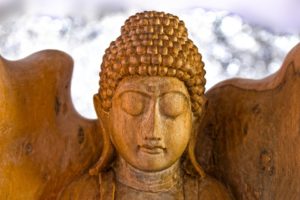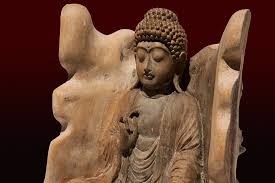Siddhartha Gautama had a life of contradictions. He was born to a mighty warrior and a member of royalty. As was the custom a seer was called on at his birth to predict his future. The seer predicted he would either save humanity or become a great king.
His father was interested in him honoring his royal position and becoming the next king. He lived a life of privilege and riches. He had a wife and son. At the age of 37, he seemed to have a change of heart.
The four sights
It is said that Siddhartha saw four sights that caused him to be filled with infinite sorrow for the suffering of all mankind. He saw a sick man, a poor man, a beggar, and a corpse. He could no longer live in the palace as a member of royalty could and privilege could.
Siddhartha Gautama at first dedicated his life to an extreme form of asceticism. It was all centered around self-denial. It was said that during this time in his life he became so thin that if he placed one hand on the small of his back and one hand on his stomach, he could feel the imprints of the hands-on one another.
It was during this phase of his life he heard a teacher of musical instruments speaking to a student. If the strings were too tight the music would not be harmonious. If the strings were too loose the same results would happen. It was this overheard lesson that changed his life forever.
With these thoughts floating in his mind it is said he went to meditate beneath a pipal tree. At the end of this intense yoga meditation, in one single night, he figured out how to end the cycle of infinite suffering. He was then Buddha.
A version of Buddha’s beginning
Each sect has a little different version of the story. They all agree after this meditation he dedicated his life to teaching others about living in Middle Way.
 The relationship with his family had to change after he became the “Enlightened One”. Buddha lived in Sangha. It was a city inhabited only by men. It was believed that allowing women within the walls it would weaken the city. Buddha made an exception for his wife and aunt to come into the city and become the first Buddhist Nuns. Perhaps it was a way of joining his former life with his new calling.
The relationship with his family had to change after he became the “Enlightened One”. Buddha lived in Sangha. It was a city inhabited only by men. It was believed that allowing women within the walls it would weaken the city. Buddha made an exception for his wife and aunt to come into the city and become the first Buddhist Nuns. Perhaps it was a way of joining his former life with his new calling.
He had a small following of monks who followed his teachings. They wore yellow robes to show their respect to the Middle Way and the teachings of Buddha. After he passed the following stayed relatively strong and yet very small. Almost 200 years after his passing the great Mauryan emperor, Asoka converted to Buddhism. Then the small inconsequential religion became a major and wildly accepted religion. The Buddhists of Sri Lanka are thought to have maintained the most original form of Siddhartha’s teaching.
Most of the stories of his passing have the last words he shared with humankind. It seems a fitting end.
Impermanent are all created things; Strive on with awareness.
http://www.wsu.edu:8000/~dee/BUDDHISM/SIDD.HTM
http://webspace.ship.edu/cgboer/siddhartha.html
https://www.youtube.com/watch?v=DO6mvenNP1Y





